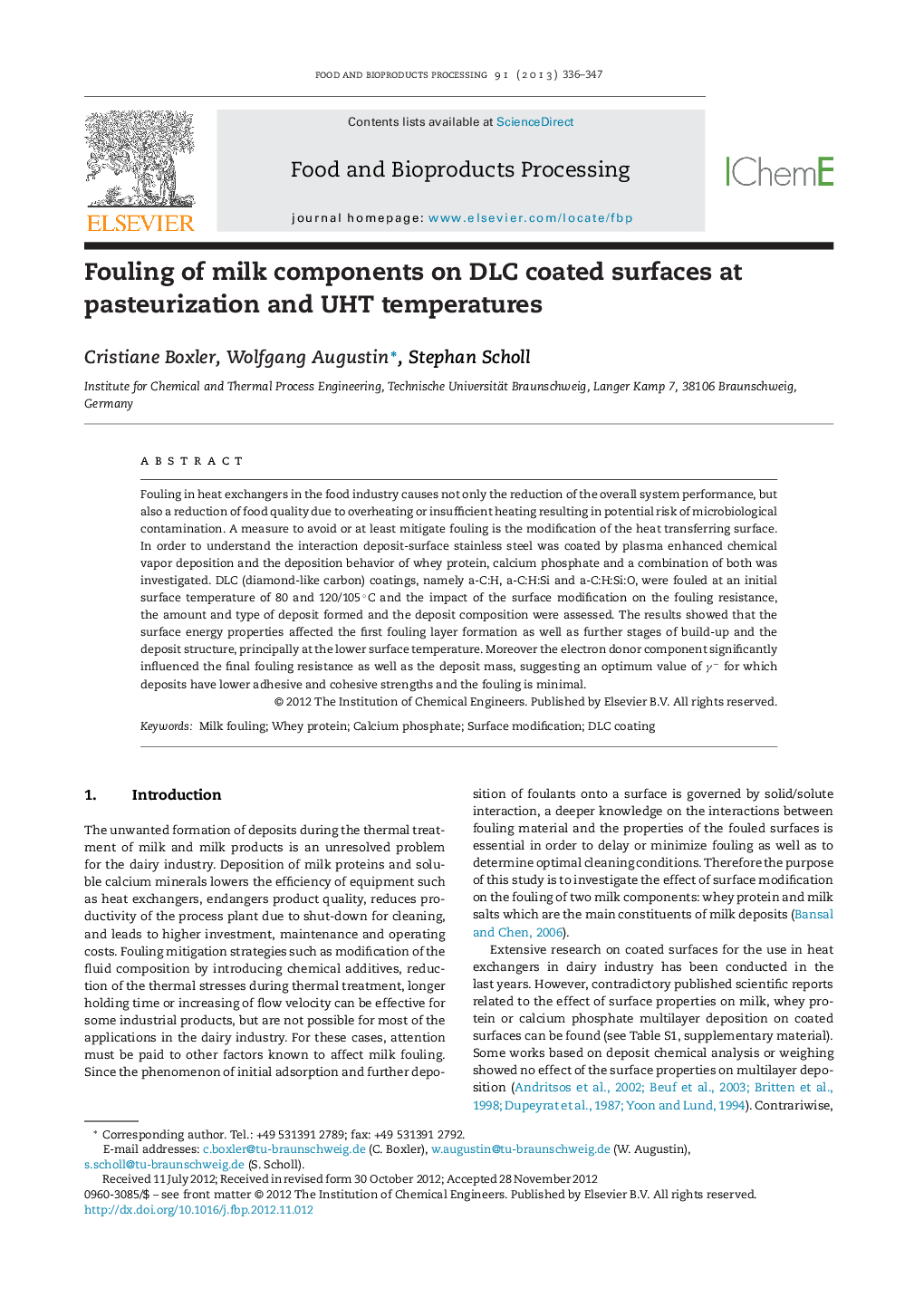| Article ID | Journal | Published Year | Pages | File Type |
|---|---|---|---|---|
| 19097 | Food and Bioproducts Processing | 2013 | 12 Pages |
Fouling in heat exchangers in the food industry causes not only the reduction of the overall system performance, but also a reduction of food quality due to overheating or insufficient heating resulting in potential risk of microbiological contamination. A measure to avoid or at least mitigate fouling is the modification of the heat transferring surface. In order to understand the interaction deposit-surface stainless steel was coated by plasma enhanced chemical vapor deposition and the deposition behavior of whey protein, calcium phosphate and a combination of both was investigated. DLC (diamond-like carbon) coatings, namely a-C:H, a-C:H:Si and a-C:H:Si:O, were fouled at an initial surface temperature of 80 and 120/105 °C and the impact of the surface modification on the fouling resistance, the amount and type of deposit formed and the deposit composition were assessed. The results showed that the surface energy properties affected the first fouling layer formation as well as further stages of build-up and the deposit structure, principally at the lower surface temperature. Moreover the electron donor component significantly influenced the final fouling resistance as well as the deposit mass, suggesting an optimum value of γ− for which deposits have lower adhesive and cohesive strengths and the fouling is minimal.
► Whey protein and/or calcium phosphate deposition on DLC coatings was investigated. ► Fouling behavior at an initial surface temperature of 80 and 120/105 °C was compared. ► Surface energy affects initial fouling layer structure and deposit mass/composition. ► The electron donor component influenced significantly the final fouling resistance. ► An optimum value of the electron donor component for minimal fouling was found.
